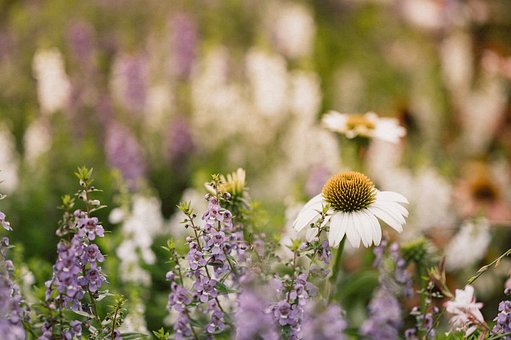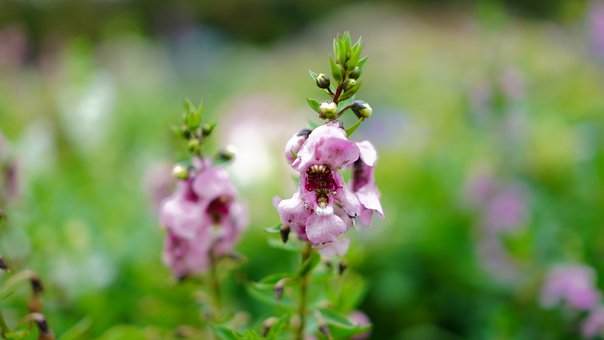How Do You Keep Angelonia Blooming?
To encourage Angelonia to keep blooming, you need to prune by removing dead flower stalks, water as needed, and enough sunlight to feed them nutrients every few weeks. Angelonia is a perennial favorite in the garden, and for a good reason – it is beautiful, easy to grow, and produces many flowers. However, Angelonia can be susceptible to pests and diseases like most plants. If you’re wondering more about how to keep Angelonia blooming, then this article is for you. It contains the best tips for caring for this plant and ensuring it produces flowers longer. By following the guidelines in this article, you’ll be able to keep Angelonia healthy and looking great!
If your angelonia is not blooming, there could be a few reasons. One possibility is that the plant is not receiving enough sunlight or is being grown in temperatures that are too cool. Another possibility is that the plant may be stressed due to a lack of water or nutrients. Pests or diseases may also be causing the plant to divert its energy away from blooming. Addressing issues and providing proper care can encourage your angelonia to bloom and thrive.
Table of Contents
Angelonia Care: How To Keep It In Bloom
Angelonia plants are a staple in summer flowerbeds because of their hardiness and long-lasting blooms. In addition to attracting pollinators to the sunny garden, the low-maintenance requirements ensure that your plants will greet you with blooms even after a week’s vacation.

When the Soil Becomes Dry, Water It!
Drought-resistant once established, angelonias are a good choice for a desert landscape. Until they become well-established, water them two to three times per week at a minimum. Only water the plants when the soil feels dry to the touch after that point. Root rot can occur as a result of excessive watering.
Expose Them in Direct Sunlight
Your angelonia plants will thrive if you give them a full day of direct sunlight each week. Withering and sparse blooms are the fate of plants that do not receive at least six hours of daily direct sunlight.
Fertilize Once A Month
Because angelonias are light feeders and will overgrow their foliage at the expense of their flowers, if you fertilize them more frequently than once a month, you should only fertilize them once a month. To avoid fertilizing again, use a timed-release flower fertilizer mix like a 10-5-10 or 12-12-12 at planting time that contains a balanced fertilizer.
Keep Them Away from Pest and Diseases
Angelonias are tough, disease- and pest-resistant plants. But aphids and whiteflies may occasionally attack these plants. Make use of appropriate pesticides if this happens. For the most part, angelonias are easy to grow and don’t require much attention.
Provide Soil Rich Organic Matter
A wide variety of soils are suitable for growing angelonia plants. Still, a rich in organic matter soil will reduce the amount of water and fertilizer needed. Because plants require good drainage to avoid root rot, growing Angelonia in raised beds or containers is good if you live in a clay-heavy area.
Consider the Temperature and Humidity
Angelonia plants thrive in the heat of the summer and high humidity. Their natural habitat is in the deep South, where sultry conditions reign supreme. Angelonia plants do well in the southwestern United States, provided they are given a little extra water.
Allow Plenty of Space Between Your Plants
Powdery mildew can develop on angelonia leaves in humid climates with insufficient air circulation. Space the plants out or relocate them to a location with better air circulation to avoid this.

How to Prune Angelonia?
Along the length of the stem, the plant bears a profusion of purple, pink, or fragrant white flowers. Deadheading spent flowers encourages the emergence of new blooms. Pruning encourages new growth and aids in preventing disease and pest infestations on the plant.
- To avoid the development of seeds, remove spent flowers by deadheading them. Pinch off individual blooms with your fingers to create a few sprinklings of flowers. Remove the spent flowers from a stem by cutting it back to one inch above the top set of leaves if several are on a single stem.
- A stem with multiple spent flowers can be pruned to 1 inch above the top set of leaves if there are several of them on the stem.
- At the base of the plant, remove any broken, dead, or diseased stems. A plant’s base should be pruned to remove fallen or twisted stems.
- It is necessary to pinch or cut back lanky stems to encourage new growth. Thin the plant by cutting back unattractive or leggy stems to the base.
- Before new growth begins and after growth has ceased, prune plants more heavily. During the rest of the year, prune lightly to remove any dead or damaged stems that may have grown through.
